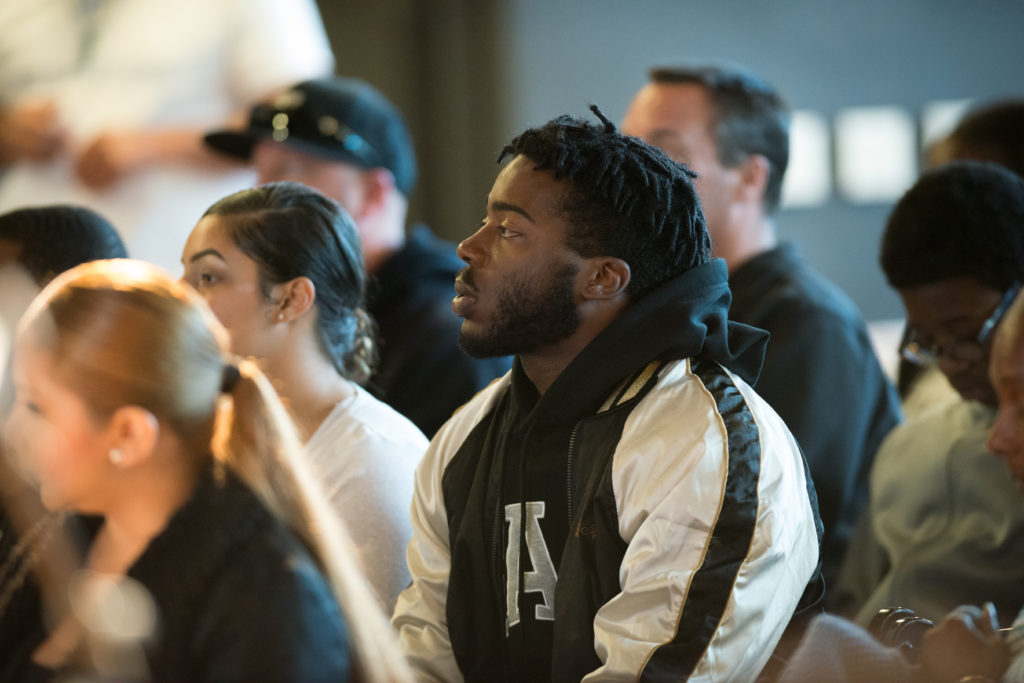Photo used with permission from The California Endowment
This guest blog, written by Traci Broady, The Annie E. Casey Foundation, offers participant reflections on a recent CSSP Learning, Equity, and Power (LEaP) session, “How Funders Can Help Build Community Power: Lessons from The California Endowment’s Building Healthy Communities Initiative.” Learn more about LEaP here and watch a recording of the session here.
After nearly two years of working remotely in the pandemic, it was a breath of fresh air to connect with peers during the recent Learning, Equity, and Power (LEaP) Lab discussion about ways funders can build power in communities. It was an important reminder about why we in the community change field do what we do, and the responsibilities we have to ensure those things are done right.
Put simply, funders must be willing to listen to what communities say that they need, then provide the resources and support to achieve the goals residents have set for their neighborhoods. Doing so requires intentional work on our part to develop trusting relationships with a multitude of local stakeholders, including residents, so we may remain accountable and responsive to emerging priorities.
I walked away from the session (to my kitchen) thinking about some parallels between The California Endowment’s Building Healthy Communities (BHC) effort and work I’ve done as part of the Annie E. Casey Foundation’s seven-year Family-Centered Community Change™(FCCC) initiative.
Casey launched FCCC to support local partnerships in three high-poverty neighborhoods—Buffalo, New York; Columbus, Ohio; and San Antonio, Texas—as they developed a more integrated set of services to help parents and children succeed together. Casey entered these communities not as a lead funder or program designer, but rather a strategic partner and co-investor to support existing community development efforts.
Much like BHC, the strategic co-investor role with FCCC required a high-touch staffing model and significant time on the ground. It also required a change in thinking, flexibility, and honest communication. We had to be diligent about building trust, mindful of power dynamics, and committed to finding the right community partners.
As discussed during the LEaP session, that often involved continually asking for feedback and providing opportunities for honest engagement with partners and other key stakeholders. One of the ways Casey solicited that input was through ongoing, anonymous surveys with the local partnerships that a third-party evaluator administered.
In addition to the thread about trust and dynamics, I really appreciated Sandra Witt—who serves as TCE’s Managing Director; Program & Partnership, Power Infrastructure Statewide—highlighting the need for foundations to interrogate how investment strategies and approaches might unintentionally perpetuate inequities. The Casey Foundation’s racial equity journey has been well-documented. Not only have we been working for years to build our internal understanding and capacity, but also to support our grantees in doing the same.
Most recently, we’ve been focusing on the fundamental role youth engagement plays in realizing a more equitable and inclusive society, and the need to make it central to any community change initiative. We’re constantly looking for ways to ensure that the people—including youth—most affected by policies and programs are the ones guiding their development, implementation, and evaluation.
I am heartened to hear from the session that so many peers share that same commitment, and I look forward to continuing to learn from one another.
Traci Broady is a senior associate with the Annie E. Casey Foundation’s Center for Civic Sites and Community Change
